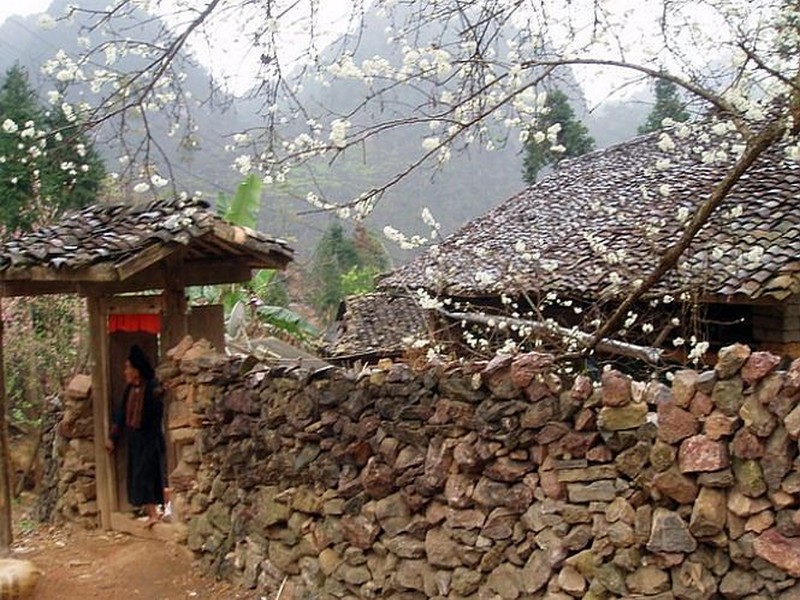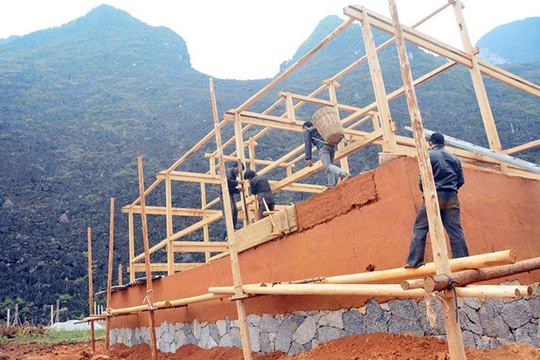Your favorite destinations
| No | Destination |

Ha Giang is spectacular yes, but it would be ordinary without the local who have dwelled there for ages. People of ethnics there have the most significant things in their lives- a house to call home. Let’s examine a kind of those.
Strolling on a rollercoaster ride along Ha Giang and you may see a variety of houses that were made by people of ethnics that you can remember quite few. And you may see some houses that look a bit similar to houses that you saw as you just leave Hanoi (sigh). Anyway, as you go deeper into the karst plateau, you can see more houses that that stand in small clusters of three which are made of dark yellow earth, fenced by walls made from lots of unglued small pieces of stones because they are. Had you been there a bit earlier from Tet holidays, you would have seen those houses were shine by eerie peaches blossoms at the front yard.

Actually there are some ethnics out there who build earth houses to shelter, which are really fine to insulate from the difficult climate outdoor. But the stone wall to fence the household indicates that the house belong to the most populated ethnic of H’Mong. There are quite some branches- Black, Red, Blue and Mosaic, living on very steep and rough rock mountain sides that usually looks like cat’s ears.
Walking through the entrance as you see in the photo, enter the house. There are always 3 aisles and 2 doors: the left aisle to place the stove, wooden planks to fence the host couple’s bed, a corner for grain’s millstone and mortar. The right aisle to place guest bed and a small fireplace. Right above the fireplace there’s a hanging platform to store harvested grains, the smoke and dry warm air would certainly protect them from bugs and humidity. That hanging platform is used for extra guest bedding too. The largest middle aisle is to place a simple altar and serves as communal place.
Traditionally, there should be a test and a ritual to pick a location to build a home: place three grain of corn or rice on the soil, put over a bowl or a wooden bucket, offer three sticks of incense, burn the votive paper to ask the divinity of the land for permission to build a home. The next day, if there aren’t any grain eaten away by ants or bugs, it’d be good to go, otherwise they have to find a new location.
I doubt they can be picky at the moment, there are desires to build a home close to their relatives, commune, some administrative red tape and commercialized estates.
Build from a foundation, dig up 1 meter deep and place big chunks of rocks to 2 hand spans above the ground, the framework and start to find nice quality soil to “build a wall”. No strangers allowed on site, especially women. Pardon for the traditional bias.
The host callout for some neighbors to aid, make some 1.5*0.5 m molds, filled them with filtered soil and compress them by whacking wooden maul over. Block by block and voila! Smooth surface, sharp corners, no machine needed

After that they have to pick a favorable date according to the host’s signs to go to the forest, that ritual again to ask the forest’s divinity to chop down a tree to make two ‘mother column’ and a top beam. Some H’Mong’s sub-ethnics really worship the mother column as their most sacred thing in the house. The mother collum in Ha Giang actually represents kind of tough masculinity and gentleman’s morale. The top beam must not be dropped to the ground but to be put in place immediately.
Maybe the cumulative experience through ages suggests the wall, the gate and window settings and the roof tiles make it enough to stay cool in summer and keep warm in winter. I’ve met an artist who built few earth bungalows said, the wall has some humidity absorbent effect to prevent the hemp brocade from being musty. The good thing is the locals seem don’t want to build generic house made of concrete and aluminum roof. Thank god, that setting doesn’t just look ugly, un-modernized and inferior to the earth house in every aspect. The modern way is really to look back and learn from the nature and the ancient people way...
There's a catch, it's quite dark inside, next time I would suggest them "a liter of light"